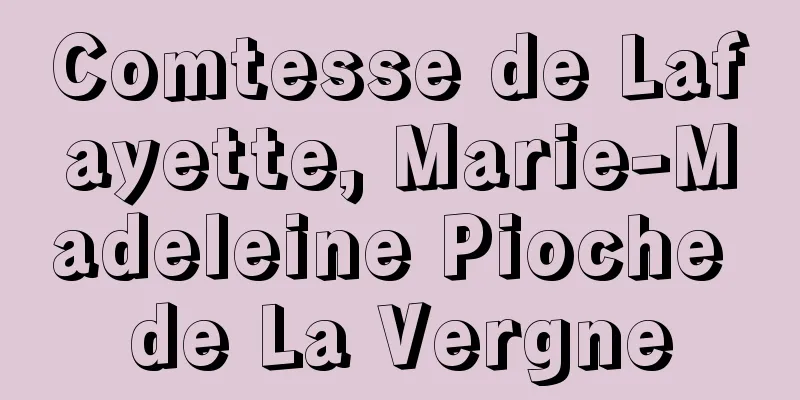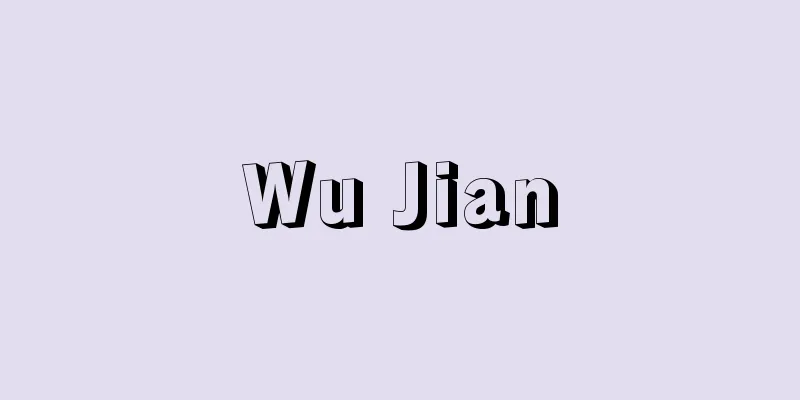Tiananmen Square incident

|
The First Tiananmen Square incident occurred in 1976 and the Second Tiananmen Square incident occurred in 1989, both of which were mass uprisings that took place in Tiananmen Square in Beijing, China. [Mineo Nakajima] First Tiananmen Square incidentThe First Tiananmen Square incident was a mass uprising at the end of the Mao Zedong regime in China, and was a landmark event that demonstrated the Chinese people's resistance to the trend of absolutizing "Mao Zedong Thought" since the Cultural Revolution and to the patriarchal regime of Mao Zedong. As soon as Premier Zhou Enlai died in January 1976, a campaign was launched in China to criticize the "capitalist faction" (the power-hungry faction that follows the path of capitalism). Meanwhile, the Chinese people's desire to mourn Premier Zhou Enlai, who had worked for many years to revolutionize and build China and to increase China's prestige on the international stage, was suppressed, and the far-left trend began to dominate again. In this situation, on April 4, 1976, the day of Qingming Festival, which commemorates the deceased, the people of Beijing held wreaths and placards in their hands and marched to the Monument to the People's Heroes in Tiananmen Square, turning the monument, which bears an inscription written by Zhou Enlai himself, into a kind of altar. However, when the Beijing city authorities and authorities removed the wreaths that had been offered at the monument, the angry masses rose up in rebellion on the following day, the 5th, and set fire to buildings and cars, resulting in a major uproar. The placards also contained many poems criticizing Mao Zedong's wife Jiang Qing and his aide Yao Wenyuan, who were later arrested as part of the "Gang of Four," clearly expressing their intention to rebel against the Mao regime. This incident was thoroughly suppressed by the public security authorities and the military, and was treated as a counter-revolutionary incident. The Party Central Committee pursued the responsibility of Deng Xiaoping (then Vice Chairman and Vice Premier of the Communist Party of China, who died in 1997) as the mastermind behind it, and on April 7, he was stripped of all his duties and once again ousted. At the same time, this incident led to Hua Guofeng officially becoming Prime Minister. China experienced upheaval that September with the death of Mao Zedong and the arrest of the "Gang of Four" in the Beijing Coup in October, but as the de-Maoization of China progressed, the assessment of the Tiananmen Square incident was reversed in November 1978, with the incident now being called the "April Five Movement," in reference to the historic May Fourth Movement of 1919. [Mineo Nakajima] Second Tiananmen Square incidentThe Second Tiananmen Square incident was the "Bloody Sunday Incident" that occurred in Tiananmen Square from late night on June 3rd to early morning on June 4th, 1989. It is also called "6/4" for short, after the date of its occurrence. The democratization movement that arose in mid-April of that year in mourning the death of Hu Yaobang, former General Secretary of the Communist Party of China, was a mass movement of students and citizens calling for "rule of law" instead of "rule by man" by Deng Xiaoping, who was reigning as the "last emperor". The memorial demonstration, which was initially started mainly by students, developed into a demonstration demanding democratization, and eventually gained widespread participation from citizens, occupying the square and holding hunger strikes. In addition, government officials, media, and military personnel also participated, and the demonstrations were held on a scale of tens of thousands of people. The background to this included dissatisfaction with Deng Xiaoping and his elder statesmen, who were strengthening their dictatorial rule, protests against the soaring prices caused by the economic liberalization policy, and the influence of the democratic reform movement that was underway in Eastern European countries. In mid-May of that year, the then Soviet General Secretary Gorbachev, the flag bearer of perestroika, visited China, and as many as one million demonstrators filled Tiananmen Square every day. Martial law was declared in Beijing on May 20 of that year, and eventually the People's Liberation Army mobilized tanks and other weapons to violently suppress the June 4th Uprising, opening fire on students and citizens, resulting in many deaths. At the time, General Secretary Zhao Ziyang, who sympathized with the students, was ousted and Jiang Zemin, Secretary of the Shanghai Municipal Party Committee, was chosen as his successor. However, the criticism both at home and abroad against Deng Xiaoping and other Chinese authorities for labelling students and citizens calling for democratization as "counter-revolutionary rebels" was heavy and severe, and it must be said that this has left a huge legacy of disaster for the future of China. [Mineo Nakajima] "Beijing Fierce" by Nakajima Mineo, vols. 1 and 2 (1981, Chikuma Shobo) " "China's Tragedy" by Nakajima Mineo (1989, Kodansha) Source: Shogakukan Encyclopedia Nipponica About Encyclopedia Nipponica Information | Legend |
|
中国・北京(ペキン)の天安門広場で起きた大衆反乱で、1976年の第一次天安門事件と1989年の第二次天安門事件がある。 [中嶋嶺雄] 第一次天安門事件第一次天安門事件は中国の毛沢東(もうたくとう/マオツォートン)体制末期における大衆反乱で、文化大革命以来の「毛沢東思想」絶対化の風潮と毛沢東家父長体制への中国民衆の抵抗を示した画期的事件であった。1976年1月に周恩来(しゅうおんらい/チョウエンライ)首相が死去するや、中国では「走資派(資本主義の道を歩む実権派)」批判のキャンペーンが一斉に開始された。一方、長年、中国の革命と建設および国際的舞台における中国の威信の増大に努めた周恩来首相を追悼しようとする中国民衆の意向は抑えられ、ふたたび極左的な潮流が支配し始めた。そのような状況のなかで、故人をしのぶ清明(せいめい)節の日にあたる1976年4月4日、北京の民衆は手に手に花輪やプラカードを掲げて、天安門広場の人民英雄記念碑に向かってデモ行進し、周恩来自筆の碑文が刻まれている記念碑を一種の祭壇に化してしまった。ところが、北京市当局と官憲が記念碑に捧(ささ)げられた花輪を撤去したために、翌5日、怒った大衆が反乱に立ち上がり、建物や自動車に放火するなどして一大騒乱となった。プラカードには、のちに「四人組」として逮捕された毛沢東夫人の江青(こうせい/チヤンチン)や側近の姚文元(ようぶんげん/ヤオウェンユアン)らを批判する詩も数多くみられ、明らかに毛沢東体制への反逆を意思表示したものであった。この事件は、公安当局と軍によって徹底的に弾圧され、反革命事件として処断されるとともに、党中央はその黒幕として鄧小平(とうしょうへい/トンシヤオピン)(当時、中国共産党副主席・副首相、1997年死去)の責任を追及し、4月7日、彼はあらゆる職務を剥奪(はくだつ)されてふたたび失脚していった。同時にこの事件によって華国鋒(かこくほう/ホワクオフォン)が正式に首相となった。 中国はこの年の9月、毛沢東の死を迎え、10月には北京政変によって「四人組」が逮捕されるという激動を体験したが、こうして非毛沢東化が進むなかで、1978年11月、天安門事件は「革命的行動」であったと評価が逆転した。以後、この事件は、1919年の歴史的な五・四運動になぞらえて「四・五運動」とさえよばれるようになった。 [中嶋嶺雄] 第二次天安門事件第二次天安門事件は、1989年6月3日深夜から4日早暁にかけて天安門広場で発生した「血の日曜日事件」である。その発生日から、略して「六・四」ともよぶ。同年4月中旬の胡耀邦(こようほう/フーヤオパン)・元中国共産党総書記の死を悼む形で起こった民主化運動は、“最後の皇帝”として君臨しつつあった鄧小平の「人治」に対して「法治」を求める学生や市民の大衆運動であった。当初学生たちが中心で始められた追悼デモは民主化要求のデモに発展し、やがて広範な市民の参加を得て、広場の占拠、ハンストなどを展開した。さらに政府機関の役人、マスコミ、軍人なども参加し数万人規模でデモが繰り広げられた。この背景には、独裁的支配を強める鄧小平と長老政治に対する不満、経済開放政策が引き起こした物価高騰に対する抗議、さらに東欧諸国で進行していた民主改革の動きの影響などがあった。同年5月中旬に、当時のソ連ペレストロイカの旗手ゴルバチョフ書記長が訪中したこともあって、連日、100万規模のデモ隊が天安門広場を埋めつくした。同年5月20日には北京市に戒厳令が布告され、ついには「六・四」の武力弾圧として人民解放軍が戦車などを出動させ、学生や市民に発砲するなどして多数の死者を出した。 当時、学生側に共感した趙紫陽(ちょうしよう/チャオズーヤン)総書記は失脚し、江沢民(こうたくみん/チアンツォーミン)・上海市党委書記が後任に選ばれたが、民主化を求める学生や市民を「反革命暴乱」分子ときめつけた鄧小平ら中国当局への内外の非難は重く大きくて、中国の将来にも大きな禍根を残したといわねばならない。 [中嶋嶺雄] 『中嶋嶺雄著『北京烈烈』上下(1981・筑摩書房)』▽『中嶋嶺雄著『中国の悲劇』(1989・講談社)』 出典 小学館 日本大百科全書(ニッポニカ)日本大百科全書(ニッポニカ)について 情報 | 凡例 |
Recommend
Zenami
Year of death: Bunmei 14.9 (1482) Year of birth: 1...
Strich, F.
…Today, it can be considered a period designation...
Cycladic civilization
A civilization that flourished in the Cyclades isl...
Kinsuke Town
... After the Genna and Kan'ei periods (1615-...
Anemone vitifolia (English spelling)
…[Michio Tamura]. … *Some of the terminology that...
Bologna - Bologna (English spelling)
The capital of the Emilia-Romagna region in north...
Rach Gia (English spelling)
A port city in southwest Vietnam, 200 km southwest...
Southwark
It is one of the 33 districts that make up Greater...
Kazan Han
…1437-1552. In Turkish, it is called Kazan Han. T...
Literature Theatre
Name of the theater company. It was formed in Sep...
Kynikos
…An ancient Greek sect of philosophy founded by A...
Sadachika Nabeyama
Social activist. Born in Fukuoka Prefecture. After...
Ishikawa Takuboku
Poet and tanka poet. His real name was Hajime. He...
Haley, B.
… Rhythm and blues is a type of popular music for...
Ryumyo
An Indian Buddhist philosopher who lived around 15...









